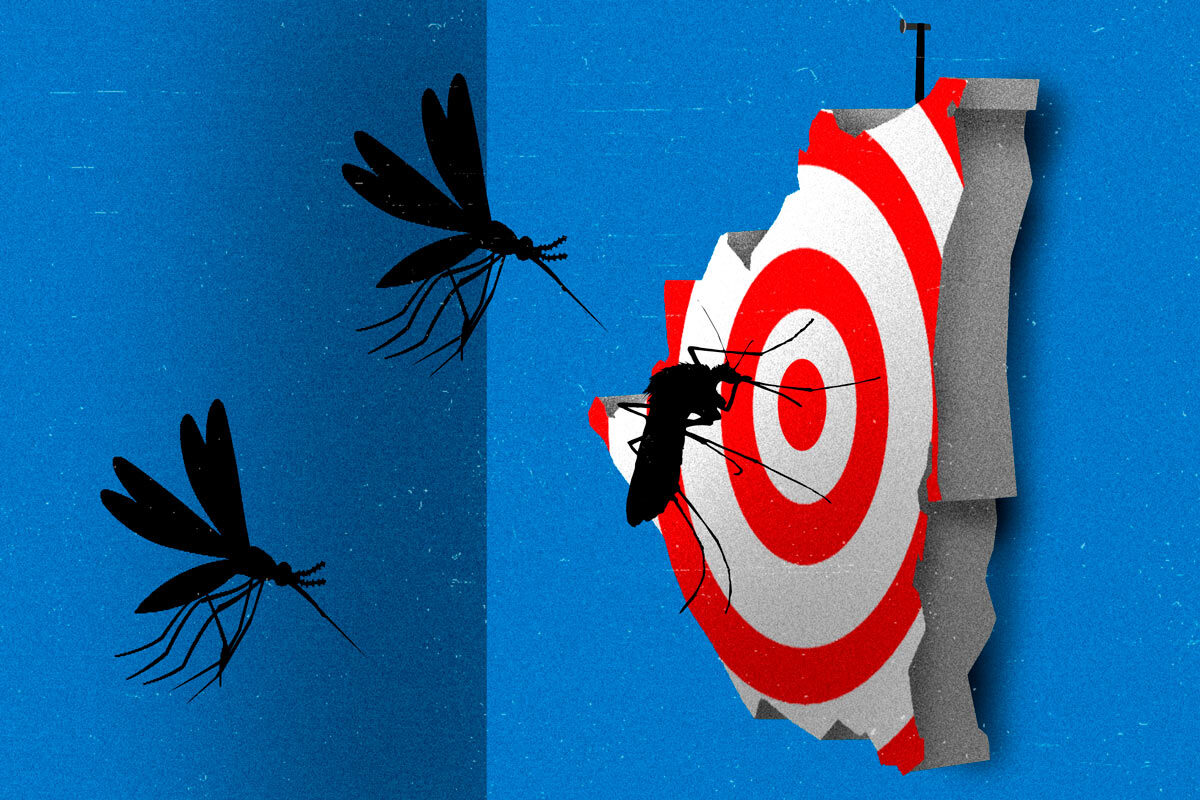At the end of July last year, with the first winter rains, malaria cases broke out in Rosita, in the northern Caribbean region of Nicaragua. In the Majawas indigenous community, about twenty cases were registered. Victor, an activist who often travels around these communities, says that two elderly people died in this outbreak. “They were elderly people, weakened by poor nutrition, and they never went to the hospital,” Victor says.
These deaths do not appear as official malaria deaths in the Ministry of Health (Minsa) data; they are not even registered as cases of malaria. When the first symptoms, fever and headache, started, the elderly did not want to go to the hospital. And when the symptoms worsened, community members could no longer transport them. “They died at home,” says the volunteer.
This DIVERGENTES article reveals that this area of the Northern Caribbean region of Nicaragua has registered more than 90% of the cases and all the official deaths from malaria in the entire country in the past five years. To obtain this data, statistics between 2018 and 2022, published by Minsa, were analyzed. However, many infections and deaths are not registered because most communities in the Northern Caribbean are far from the health system posts and health brigade volunteers have limited supplies and medicines to combat the disease.
Through interviews with doctors from public hospitals, indigenous activists, and the patients’ relatives, this article compiles at least three cases of deaths of people with symptoms of malaria, in different municipalities of the country, even in “malaria-free territories”. It should be clarified that these three people were not tested for malaria, and therefore, the death certificates given to their relatives include other causes of death, such as cardiac and pulmonary damage.
Recibe nuestro boletín semanal
Since the regime of Daniel Ortega and Rosario Murillo regained power in 2007, there were no alarming reports on malaria for eight years. In 2014, when confirmed malaria cases reached 1,163, Minsa authorities were so optimistic that they promised to eliminate it by 2020 and to declare the country “malaria-free” by 2025, according to Martha Reyes, former director of disease prevention at Minsa, who was appointed minister in 2020.
Since the promise to eradicate malaria, confirmed cases have multiplied by almost 20 times. Seven years later, in 2021, 22,571 malaria infections were detected.
The numbers show that the disease continues to migrate to other regions of the country. Of 19 departments or regions on the Minsa Health Map, only eight have not reported any cases of malaria in the last five years.
The data are alarming considering that MINSA is questioned for hiding information on other diseases or causes of death. For example, DIVERGENTES revealed that the regime hid the numbers of deaths and infections of Covid-19 in order to pretend to have contained the pandemic. People who died of pneumonia, diabetes and other pathologies, according to the Ministry of Health, actually died having tested positive for coronavirus.
The Pan American Health Organization (PAHO) has qualified the malaria cases in Nicaragua as “a severe problem”, and the regime has taken measures with bordering countries: Costa Rica and Honduras. In the past two years, regional agreements have been signed which include “effective actions on both sides of the border” with medicines, rapid diagnosis tests, exchange of information and training of health personnel.
The resources allocated to the epidemic are in the millions. Between 2019 and 2021 alone, more than $29 million were allocated, of which one-third are from international cooperation, according to the World Health Organization’s (WHO) World Malaria Report 2022.
Despite the regime’s and international agencies’ efforts to eradicate malaria, the number of detected cases remains high. This investigation counted 90,824 cases in the past five years. Over the same period, only four deaths from the disease were reported. All were registered in Puerto Cabezas, in the Northern Caribbean, between 2018 and 2019. Since then, no more deaths have occurred in Nicaragua, according to official data.
Last year, Minsa reported a decrease in the number of cases (15,165) compared to the previous two years (2020 and 2021), during which more than 22,000 cases were reported. However, Nicaragua is the fourth country in the Americas with the highest incidence of malaria. The country with the highest number of cases is Venezuela, followed by Colombia and Brazil. Nicaragua accounted for 5% of the cases in Latin America.
In the Northern Caribbean, the Anopheles mosquito continues to transmit the parasite that causes malaria through bites. It nests in a humid and swampy area, where access for health brigades is difficult, there is a shortage of medicines, and there is no specialized care for indigenous communities.
II. The mosquito that infects the Caribbean
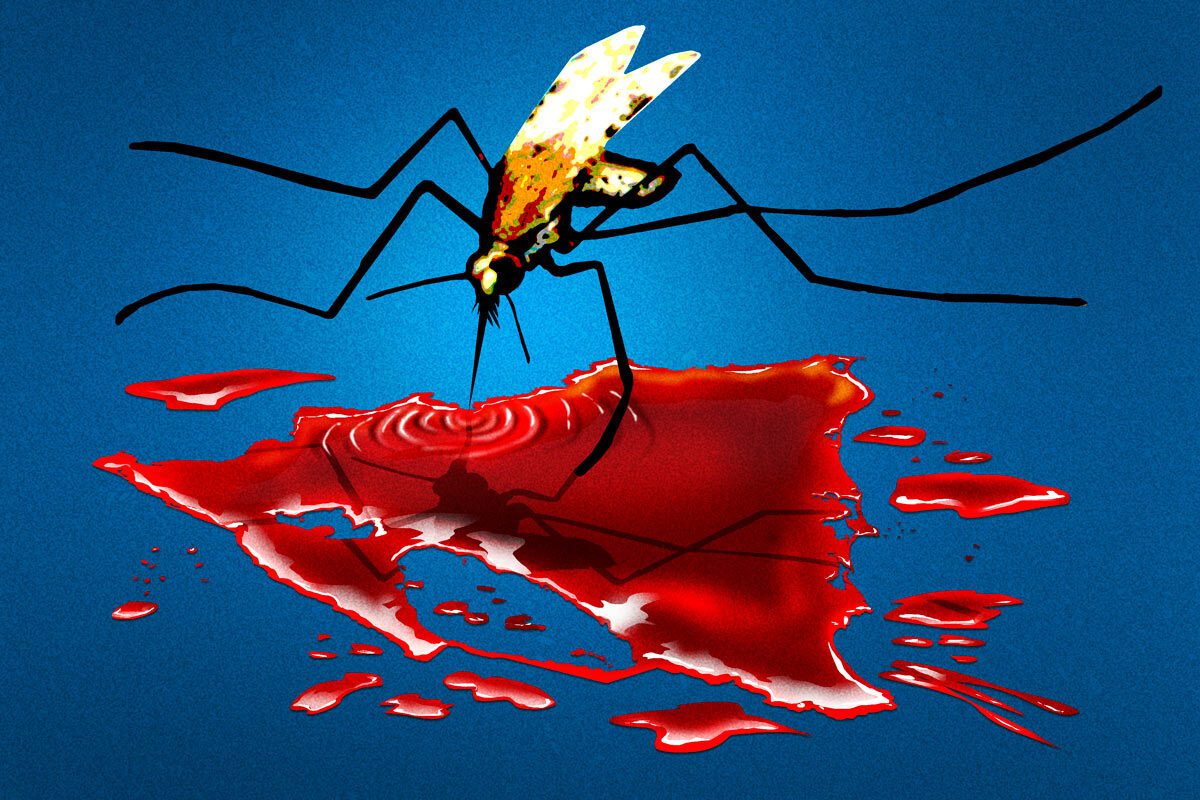
The anopheles mosquito is only six millimeters long, but its bite can be lethal. A single bite is enough to transmit a potentially fatal disease that, in 2021, infected 520,000 people and killed 126 in the Americas.
The mosquito we are talking about belongs to the genus Anopheles, is brownish in color, characterized by dark-spotted wings and a straight body. However, its greatest peculiarity lies in the fact that it is the only insect capable of transmitting four types of malaria: falciparum (the most deadly), vivax (the most common), malariae and ovale, the latter being still not very well known.
Anopheles has a wide geographic distribution. It has been identified in the five continents of the world, specifically in temperate, tropical and subtropical zones. Here in Nicaragua it is abundant in the Caribbean Coast, the climate and the occasional human carelessness has allowed it to easily reproduce without encountering major resistance so far.
Their reproductive cycle is summarized in four stages: egg, larva, pupa and adult.
Adult anopheles usually deposit their eggs in puddles, rivers or lakes. A female can lay between 50 and 200 eggs at a time. Their hatching depends on the temperature of the area in which they are found. That is, if they are in a temperate place, they can take up to two weeks to develop into larvae, but if they are in a warm climate, their evolution occurs in two or three days.
The development of the larva will also depend on the temperature. In climates such as the Caribbean Coast of Nicaragua, they can go from egg to larva in five days.
In their adult stage, they usually bite people or animals in the afternoon or at night. However, it is the females that prefer to feed on blood because of its high protein content for the development of their eggs. It is through this process that the anopheles transmits malaria to humans.
According to the Center for Disease Control and Prevention (CDC), people get malaria from the bite of a female anopheles infected with the Plasmodium parasite. It usually gets infected when it sucks infected human blood.
The parasite’s life cycle is related to two hosts: the female anopheles, where it reproduces sexually, and the male, where it multiplies asexually.
“In places like the Caribbean Coast of Nicaragua, the parasite is circulating. That is, an anopheles becomes an adult and bites a person infected with Plasmodium, the parasite reproduces inside the mosquito, and when it bites a healthy person it infects them with the parasite. Then another female mosquito will bite this person who is infected and the cycle will repeat itself,” explained an epidemiologist consulted for this article.
Once the mosquito transmits the parasite, the first symptoms that a person may present are fever, chills with shivering, headaches, muscle aches and fatigue. Nausea, vomiting and diarrhea may also occur.
“Malaria can cause anemia and jaundice (yellowing of the skin and eyes) from the loss of red blood cells. If not treated immediately, the infection can worsen and cause kidney failure, seizures, mental confusion, coma, and death,” the CDC notes in an article.
III. Outbreak of cases in the Caribbean
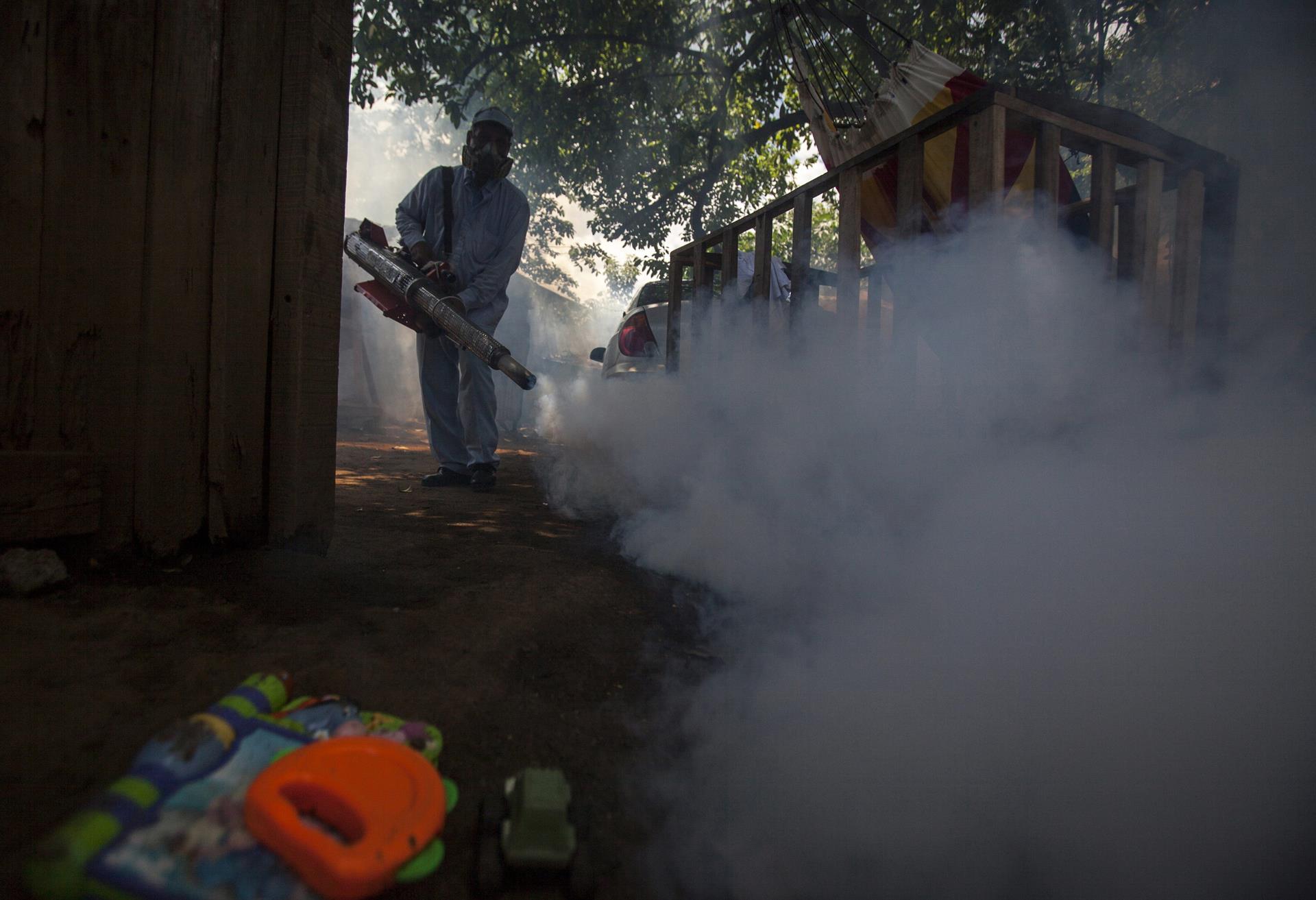
Mayawas is a Mayangna community of about 50 houses, located about 20 kilometers from the urban center. If someone needs to go to the hospital for an emergency, they have to get to the main road, located about five kilometers away, and from there pay 300 córdobas (US$9) for a cab to take them to the hospital. It can take up to two hours and it is equivalent to what a farm worker earns in three days’ work.
“The worst thing is that when you get to the hospital they don’t give you good attention,” says Victor, a community activist from Rosita. Victor says that for that reason “the indigenous people don’t go to the hospital, because we prefer to cure ourselves at home, with our plants.” Since their ancestors, the indigenous people have relied on their plant-based medicine to fight any illness, even pandemics.
In Mayawas they claim that the elderly died from malaria, because some have gone to the medical posts and they get diagnosed with the disease through blood tests. Victor says that he and his family have been sick several times, but they no longer go to the hospital. The last time he went, there were so many cases that “they put two patients on the same bed.”
For him, the problem is that the indigenous people do not trust the health system. So even though brigades arrive with treatment and mosquito nets, the community members continue to medicate themselves with plants. “When I got sick, I took a tea called ‘hombre grande’, which is a plant that is more bitter than chloroquine and primaquine, which is like a detoxifier,” says Victor.
Dr. “H” works in a public hospital in a community on the southern Caribbean coast of Nicaragua, where the disease is relatively under control. In fact, a couple of years ago the World Health Organization (WHO) wanted to declare it a “malaria-free territory,” says Dr. H, but several “autochthonous” cases broke out, meaning that people were infected right there.
When the first rains fall, it means that patients with malaria symptoms will soon be arriving at Dr. H’s clinic. The doctor says that most of the cases detected in the community where he works are “imported”, and begin to be detected when the lobster season opens, and divers or fishermen arrive from other parts of the country. Fishing is one of the main economic activities in this forgotten and historically marginalized region of the country.
Dr. H says it is essential for him to review the patient’s medical history. The first thing he does is to assess whether they have symptoms: headache, fever, general malaise, nausea or joint pain. And secondly, but no less important, he asks if they have recently been to the Northern Caribbean of Nicaragua, especially to Puerto Cabezas, where the epidemic has its nest: where 72% of the country’s malaria cases are registered.
Dr. H has also worked in hospitals in the North Caribbean. He says that in Puerto Cabezas, during the winter, there are so many cases that not all infected patients can be admitted. “They only admit those who may be in critical conditions,” says Dr. H.
This doctor says that the protocol they have in his community, which has a low incidence of cases, is that when they detect a patient with malaria, they admit them and isolate them in a room with mosquito nets. They apply treatment based on chloroquine and primaquine, two drugs to combat malaria. On the third day, they get tested. If the blood tests show a high parasite density, the patient is admitted for four more days to complete the full seven-day treatment. If the patient responds well to treatment, is stable, and has a low parasite density, that is, a low level of contagion, medical discharge is ordered.
Dr. H says that the problem is that the hospital in Puerto Cabezas, for example, does not have the capacity to admit all the cases that arrive. So, they give them the treatment in the hospital and tell them to sleep with mosquito nets in their homes, to isolate themselves for seven days. “The patients, most of the time, do not comply with the measures and that is why they continue to infect more people,” says Dr. H.
Part of the protocol is to control the focus of the contagion. That is to say, to go to the home of the person with malaria and visit the neighborhood to detect more cases, as was done during the pandemic. Dr. H says that malaria tests and drugs are never scarce in public hospitals because international organizations are very interested in combating this epidemic. “Even if there is a lack of other drugs, malaria drugs are always available at the medical posts,” he says.
The volunteer collaborators, known as Colvol, are in charge of monitoring, diagnosis and treatment of malaria in communities in the Northern Caribbean. For that work in the region for 50 years, WHO awarded them a prize in 2022. “It pays tribute to the ability of community-based services to benefit the local population,” WHO says.
Indigenous people from remote communities say that Colvol’s efforts are not enough. For example, in the community where Victor lives, there has been an outbreak of diarrhea. So, when he came to ask them for medicines to treat these symptoms, he was told that they do not have any and that “the medicines in the first aid kit have been expired since 2019”.
IV. Minsa promises to eradicate malaria
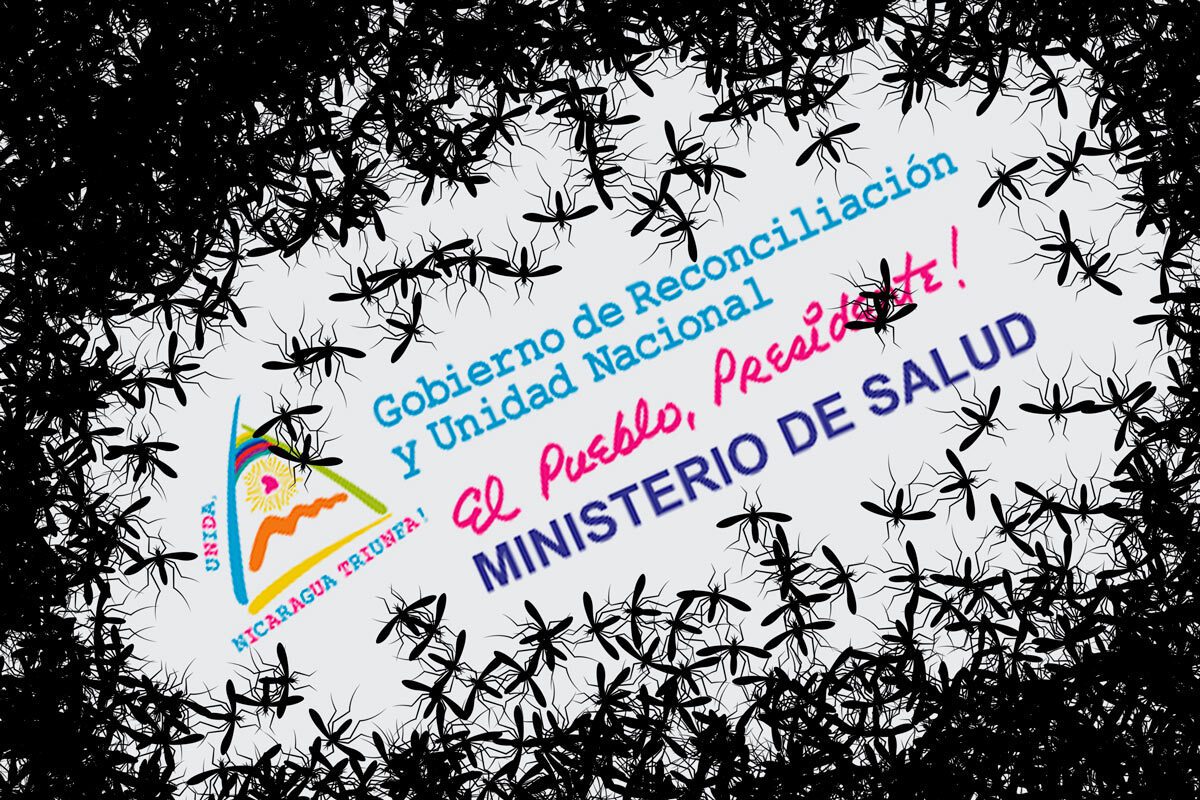
Christian Toledo’s chest “swelled with pride”. In a video recorded from his office in Managua, Nicaragua’s Director General of Health Surveillance thanked the United Arab Emirates Health Foundation for the award the country received for “the essential work carried out” in the fight against malaria.
“The role of communities in building health has been fundamental,” he said in the video shown at the 75th World Health Assembly, held in May 2022 in Geneva, Switzerland. “The work done together with volunteer partners reduced malaria cases nationally by 66%,” he said.
The speech was short but precise. In his statement Toledo detailed that the more than 9,100 volunteers in communities and neighborhoods throughout the country receive constant training from the Ministry of Health to develop actions towards the elimination of malaria, for example, active search for cases, collection of thick drop samples, delivery of treatments, mosquito nets and community awareness.
His words, however, are far from the country’s reality, specifically the Northern Caribbean region of Nicaragua, where malaria cases in the last five years totaled 82,116, according to Minsa.
Although Toledo explained that the volunteers act as community health agents, focusing on malaria awareness, surveillance, diagnosis and treatment, a health system epidemiologist, who agreed to speak to DIVERGENTES on condition of anonymity, says the strategy has so far not worked.
“There are no major results from fumigation because the insecticide is not strong enough and ‘volunteers’ believe that ‘smoke’ is enough, so it does not destroy mosquito breeding sites. Although it may seem like a minor problem, we have a big problem here. But this is due to lack of training, people who are not well trained come in and do not apply the techniques”, explained the epidemiologist.
Minsa’s strategy to combat malaria is based on house-to-house fumigation, delivery of mosquito nets (mostly in the Caribbean region of Nicaragua) and delivery of preventive treatment or testing to determine whether or not populations have the disease.
To develop its strategy, Minsa uses public funds and funds from organizations such as the Global Fund to Fight AIDS, Tuberculosis and Malaria. The data on how the money to fight this epidemic is distributed is not available due to the secrecy with which the regime handles this and all the information that in theory should be made public.
The amount given by the Global Fund, according to the WHO web page, is established according to the disease burden of the country, the economic capacity and the specific factors of each nation. Nicaragua, for example, was granted 6 million 426 thousand 652 dollars for 2022 – 2024.
“The work in the field is done with nails. The money in theory should be used to continue developing strategies until malaria is eradicated, but there are huge weaknesses: treatment is scarce and they do not say why, campaigns are done in central towns and not in the urban centers, in addition there is no capacity for care in health centers and hospitals, this is seen a lot on the Coast”, stated the epidemiologist consulted for this report.
The specialist pointed out that all these deficiencies have caused Nicaragua to fail to meet that statement made in September 2014 by Dr. Martha Reyes, director of disease prevention of the Minsa, on the eradication of malaria.
Another factor that has not allowed the eradication of malaria, according to the epidemiologist, is the deficiency in the training of health personnel and volunteers. Minsa develops sessions to train personnel working in the country’s centers in order to “address the issues that are reflected in the malaria prevention booklet” and other diseases.
In theory, those trained have to pass on this knowledge to other colleagues and volunteers, however, according to the epidemiologist, this does not happen because sometimes the time to instruct is taken up by political activities and because the staff is not motivated to learn and advise in the field.
“The payment or ‘help’ that the volunteers receive is not enough to survive. They do the work because it is an income they have if they do it, but they are not motivated to explain the booklet to each person, especially when they are paid for each house they control or fumigate,” explained the specialist.
The epidemiologist indicated that the eradication of malaria in the Pacific was partly easy due to the climatic conditions of this area, which prevent the mosquito from reproducing unlike in the Caribbean Coast, where most of the time there is rain and huge water basins.
“For the strategy to work, there must be joint, real work. Training is useless if it is not reaching all the families and they are not learning anything about how to get rid of mosquito breeding sites, for example. We must pay attention to these details of structure and launch an intense, supervised campaign to correct what has been done wrong,” said the specialist.
V. The Malaria Journey: from the Coast to the Pacific
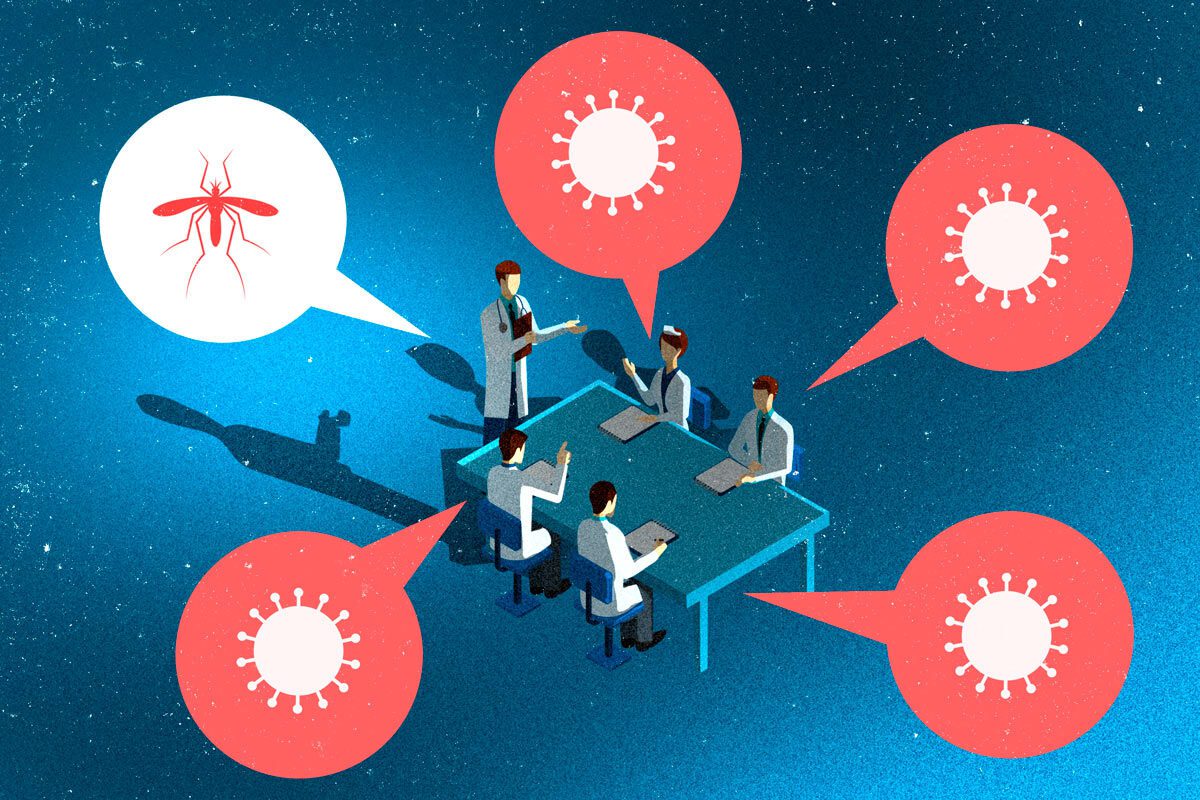
The expression lines on the doctor’s face change dramatically as he recalls the story. “It was negligence,” he says with a tone of annoyance. “That girl was abandoned by the public hospital and by the private hospital,” he continues bluntly. The case the doctor refers to occurred in Masaya in June 2020, during the peak of the Covid-19 pandemic in Nicaragua.
The girl, who was “abandoned” by the public and private health service, was twelve years old. Although all her symptoms were typical of malaria, the care she received in the hospitals was indicated to treat “pneumonia”. The doctor who had access to the case explained that the treatment was incorrect because the doctors who attended the minor failed in the diagnosis by “confusing” her symptoms with those of the coronavirus.
The doctor had access to the case because during the child’s stay in the private hospital, her mother called him to closely follow the child’s “recovery” process once she was released from the hospital.
In 2020, diseases such as malaria were “downplayed,” consciously or unconsciously, because the pandemic was the top priority. By the time the doctor had access to the girl’s case, it was too late. He barely caught a glimpse of the child a few days later, but in a coffin on the way to the cemetery.
“At that time any disease that wasn’t Covid was relegated to the least important list. And there were a number of cases of neglect that went unreported. This girl’s case is one of those,” explained the doctor, who worked for fifteen years in the country’s public system and agreed to give this interview on condition of anonymity.
The case of the twelve-year-old girl was not included in the official statistics of contagions that year. Although her symptoms and diagnosis pointed to malaria, Minsa figures do not reflect this fact. In fact, according to the government institution, in the past five years Masaya is one of the eight departments where no malaria cases have been registered.
“This girl’s sister also had malaria but the symptoms did not develop in the same way. Although she was treated at the public hospital, they did not assess her for malaria treatment either. She was treated during the time her sister was hospitalized in the private center,” the doctor explained.
The 12-year-old girl contracted malaria at home. In mid-May 2020, a relative had returned from Siuna, an area where 166 malaria-positive cases were reported last year, with symptoms of the disease, although they were not severe.
“Their relative came in infected with malaria. It is very likely that the anopheles mosquito, which is the one that transmits this disease, bit him and then infected the girl. This is how it always happens, no matter how basic it may seem,” the physician explained.
The first symptoms presented by the 12-year-old girl were fever, chills, sweating and headache. At first, her mother thought it was Covid, but she never had any respiratory problems. They took her to the public hospital for primary care but she was not admitted.
The doctors told the girl’s mother that it was an uncomplicated fever and prescribed pills to reduce the temperature and headache. On the fourth day after the onset of the first symptoms, the child’s health worsened. Vomiting appeared, the diarrhea was persistent and she presented an intense paleness. Faced with neglect at the public hospital, a week and a half after the first alerts appeared, she was admitted to a private hospital.
“That girl was in bad shape. Almost two weeks after she had all the symptoms, any studied doctor could diagnose malaria. The big fever, the shivering… the girl had to start treatment immediately to recover,” explained the doctor, a little upset.
But at the private hospital the worst happened. After a week with treatment that her mother was never informed of, the girl was admitted to another ward, without family supervision.
The girl’s mother, who, for her safety, requested that her identity and details of the case be confidential, said that the hospital authorities told her that her daughter was being treated for a respiratory problem, but never explained what it was.
A week after her admission, that is, almost a month after the first symptoms, the mother’s phone rang. She was informed that her daughter had died of atypical pneumonia. The doctor, who had the minor’s file in his hands until her admission to the private center, indicated that the whole case was negligence.
“I knew of other similar cases of patients who arrived with symptoms of dengue and other diseases who were admitted to that same hospital and left weeks later straight to the cemetery. There was so much negligence but the pandemic was so serious that the cases were not attended as they deserved,” said the physician.
DIVERGENTES learned of another case similar to that of the twelve year old girl, this time of a 14 year old girl whose father traveled to the Caribbean Coast at the beginning of January 2023 and returned infected with malaria. Contrary to the case of the girl from Masaya, the diagnosis this time was correct because her parents referred her to one of the most important private hospitals in the country.
“We never thought of taking my sister to a public hospital. The attention is deficient, and at that time there was an outbreak of respiratory diseases. It could get worse,” explained Laura, sister of the 14-year-old teenager who narrated her relative’s experience on condition of anonymity.
Laura agreed that her sister had the same symptoms as the 12-year-old who died in 2020. However, in her case she received primary care from a private doctor and he referred her to the private hospital for treatment.
“The doctor analyzed her symptoms and told us it was malaria. He asked us if anyone in our family had traveled to the Coast and the only one was my dad,” said the young woman, who affirmed that at the private hospital, and under the direction of the first doctor, her sister received proper treatment.
The doctor who learned about the case of the girl from Masaya explained that early detection is crucial to combat the symptoms of malaria and prevent people from developing other complications.
Laura‘s sister recovered a week after the disease was identified, and as a preventive measure, her entire family took prophylactic treatment to avoid another infection.
“Contagions in the cities always occur because someone has traveled to the Coast (North Caribbean), without prophylactic treatment, and comes back with malaria symptoms. And this will continue to happen because the biggest focus is there, where not much is being done to eliminate malaria”, said the doctor.

